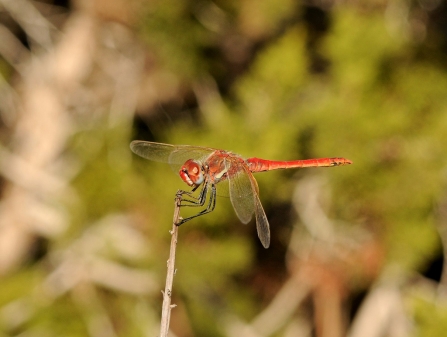In my previous blog, I looked at the effects of several weeks of drought and very high temperatures on wildlife, especially insects. Having discussed the short term effects, I thought it would be useful to consider the longer-term impacts of one-off extreme weather events, and how they fit into the expected pattern caused by climate change.
Especially when weather patterns affect a large part of mainland Europe too, species may start to move longer distances than usual. Major influxes of migrant butterflies such as painted lady and clouded yellow often start in February or March with a warm wet lush early spring in Morocco or Spain, producing an unusually large first generation of the butterflies, which then fly north… British arrivals are sometimes from this first wave (if the winds are right), but otherwise, we are reached by the second or third generation of painted ladies moving across the continent. A few have arrived in Cambridgeshire in the last couple of weeks. Hopefully these will lay eggs, allowing us to enjoy the caterpillars and then some freshly-emerged butterflies in this country. Sadly, neither painted lady nor clouded yellow are able to hibernate to survive the British winter. Instead, painted ladies have been shown to migrate south again, at higher altitudes and greater speeds than their northward movement, so spend the winter in southern Spain or north Africa. Although this means the butterflies continue their species, it also means that one boom year in Britain has no effect on the next year’s population of migrant butterflies.
For other insects, and for birds, this is not necessarily so. This summer, there has been been an influx of rare migrant or colonising insects, especially dragonflies: the best year so far for Southern Migrant Hawker (aka Blue-eyed Hawker), with at least one in Bedfordshire already, a good year for Lesser Emperor, and there have been a scatter of the rare Darter species. Careful observations in Kent and Essex have confirmed that the Blue-eyed Hawker is now breeding in the south-east England. Lesser Emperor has bred in Britain on at least one occasion, and may become regular if larger numbers reach here.


